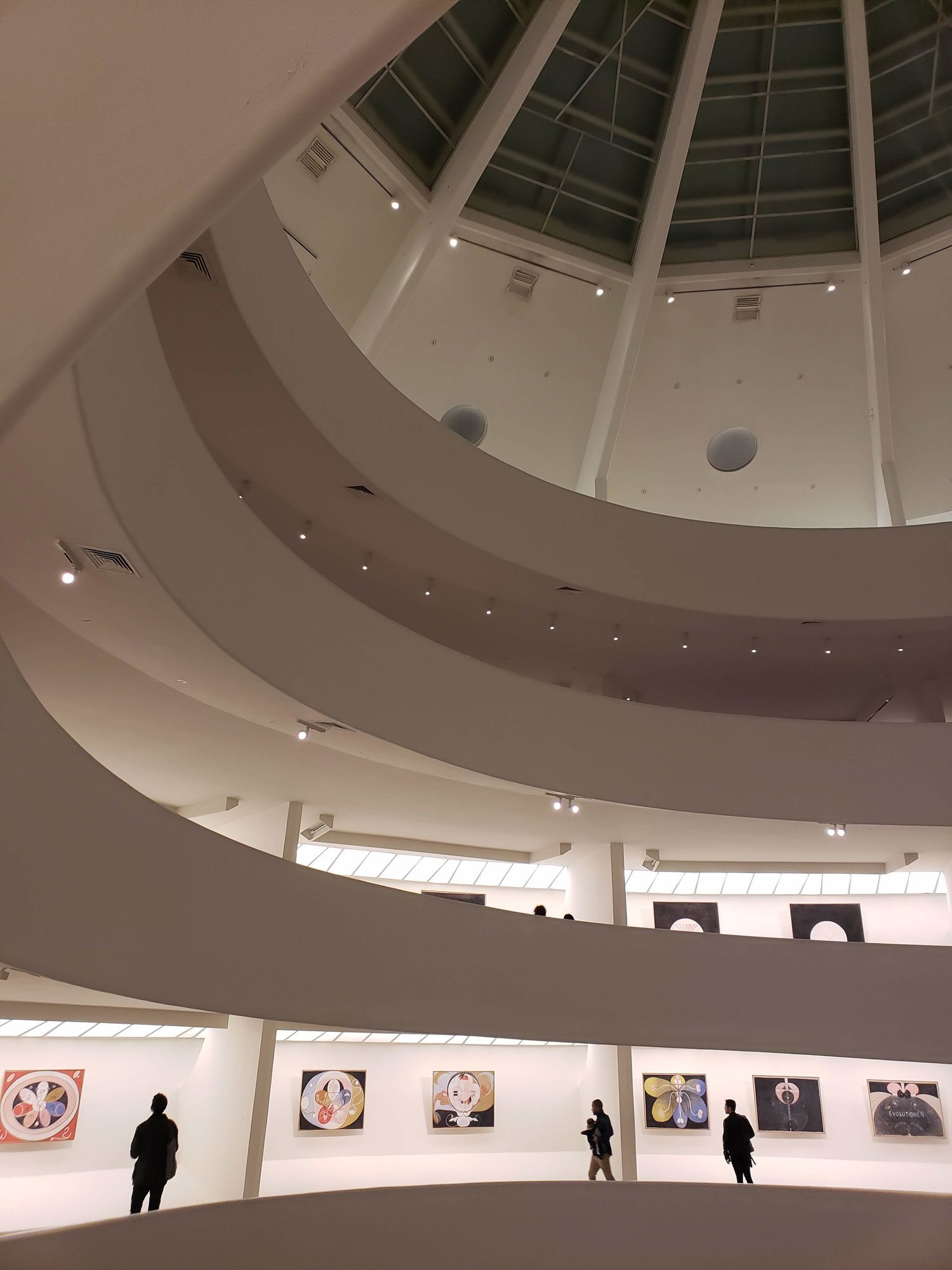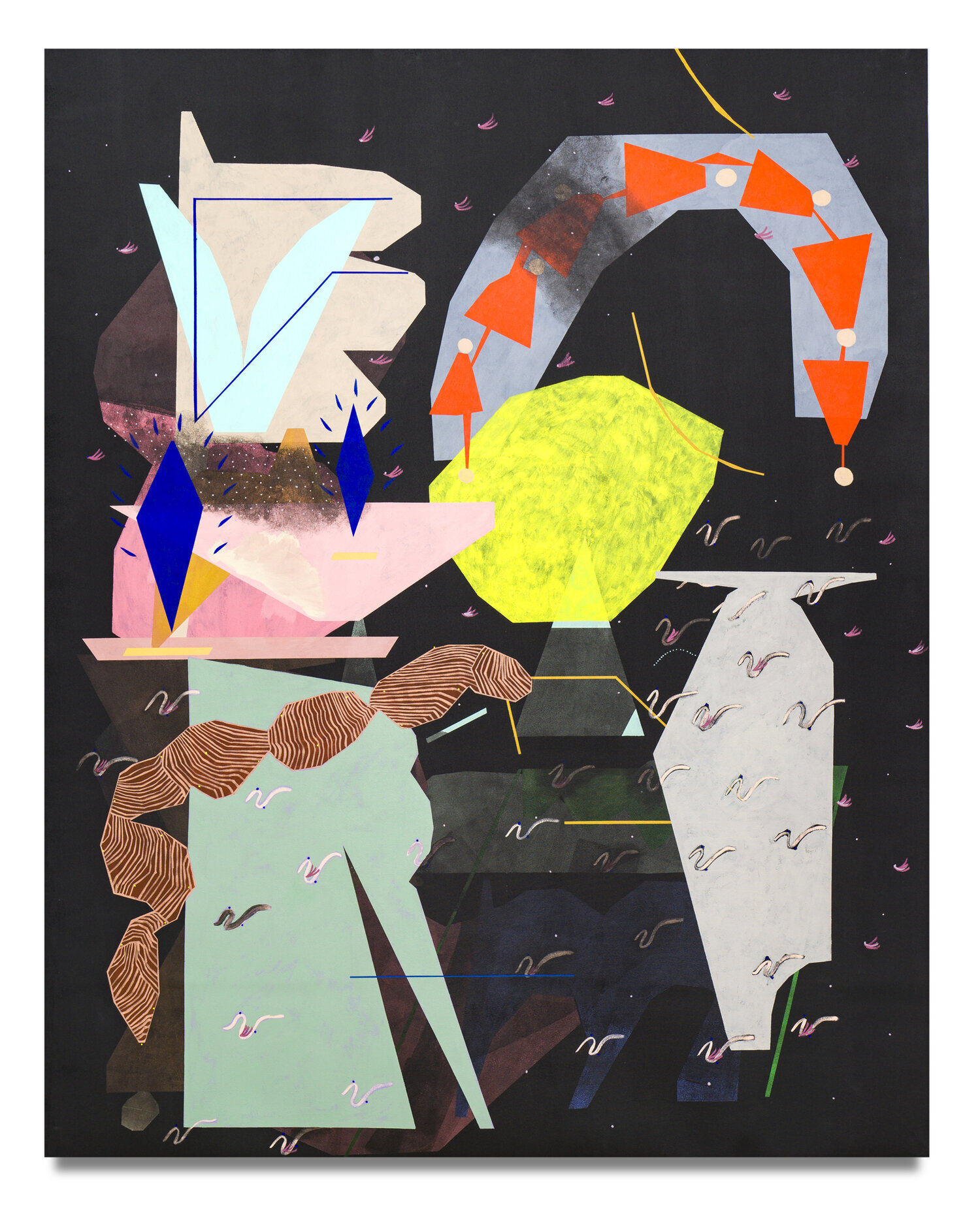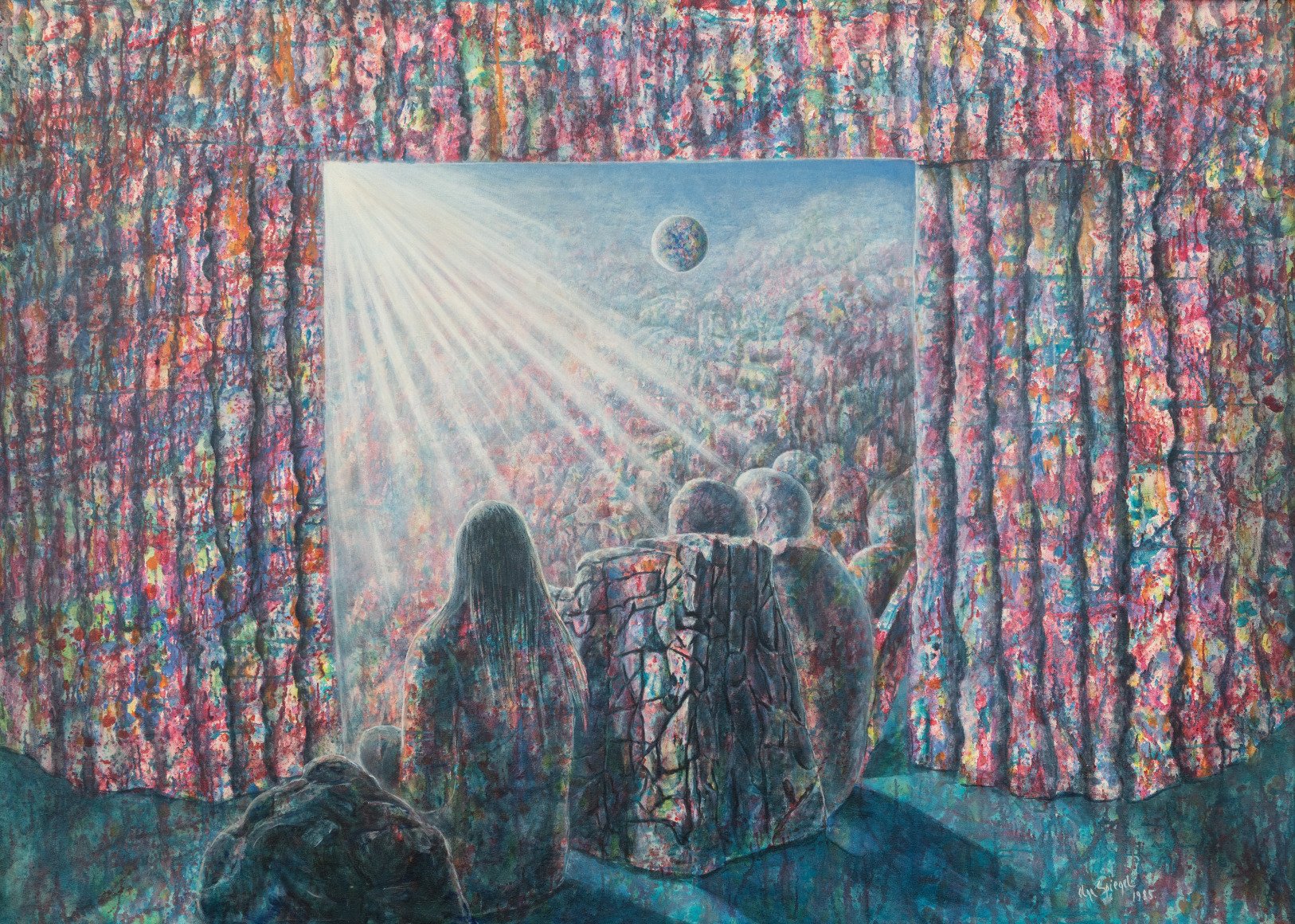Hilma af Klint “The Tree of Knowledge”
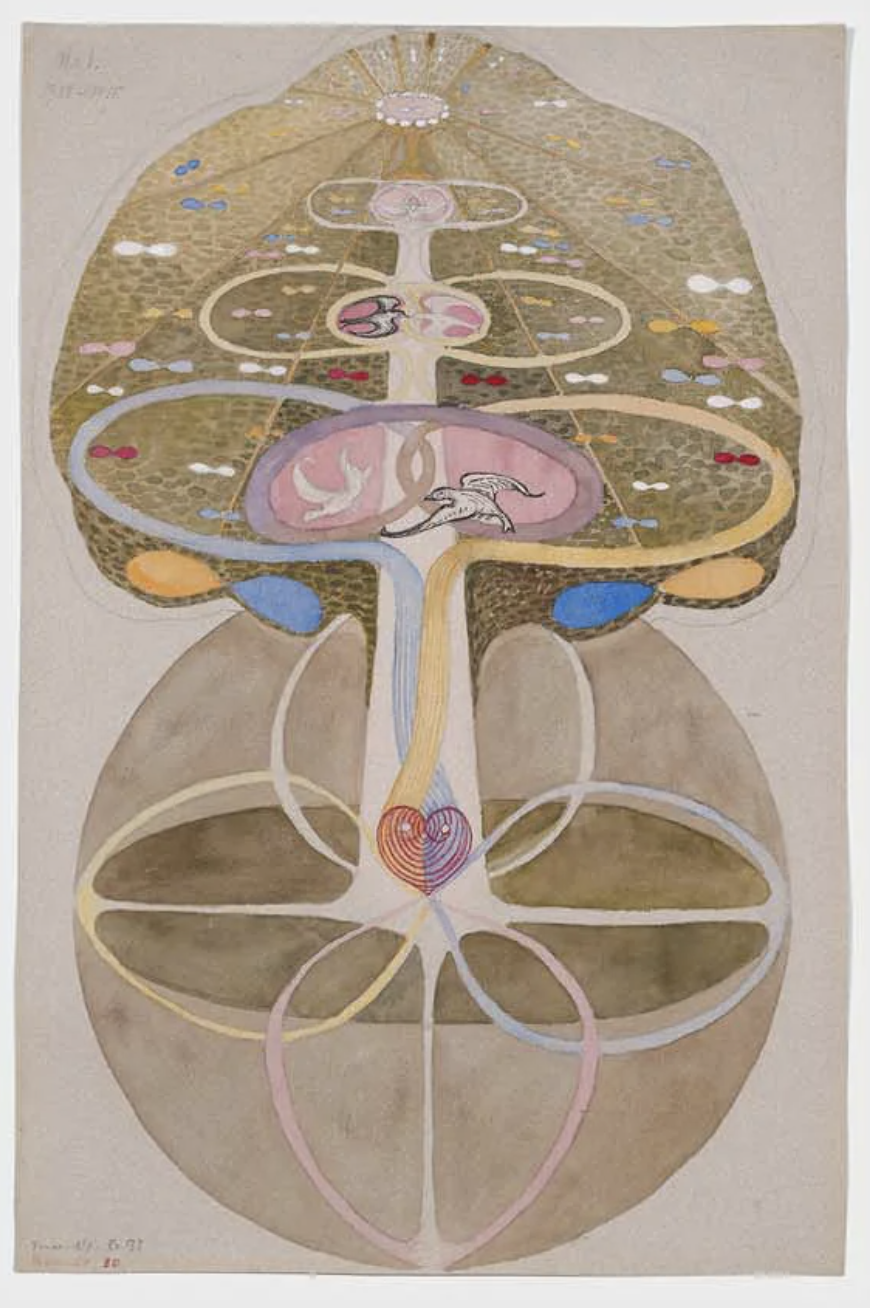
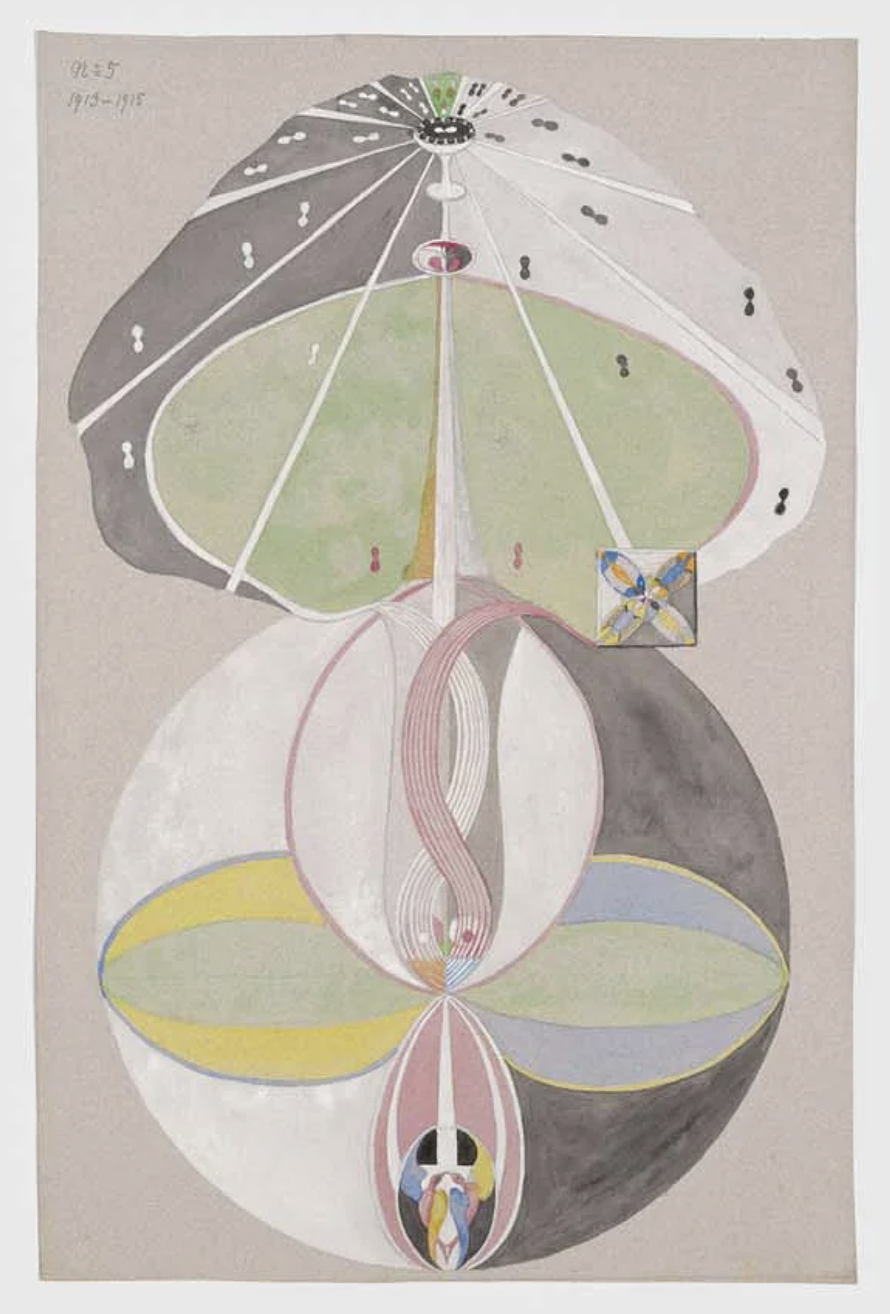
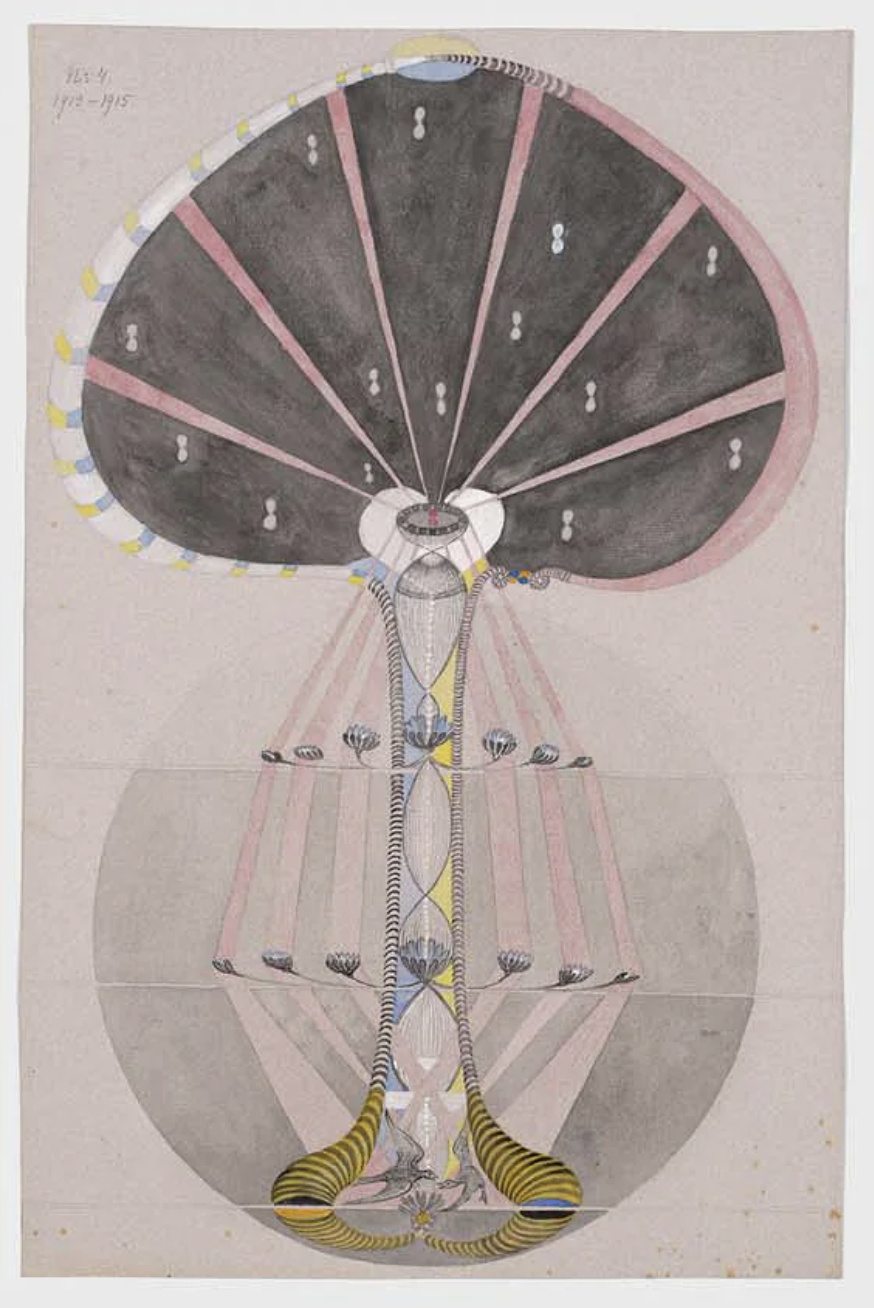
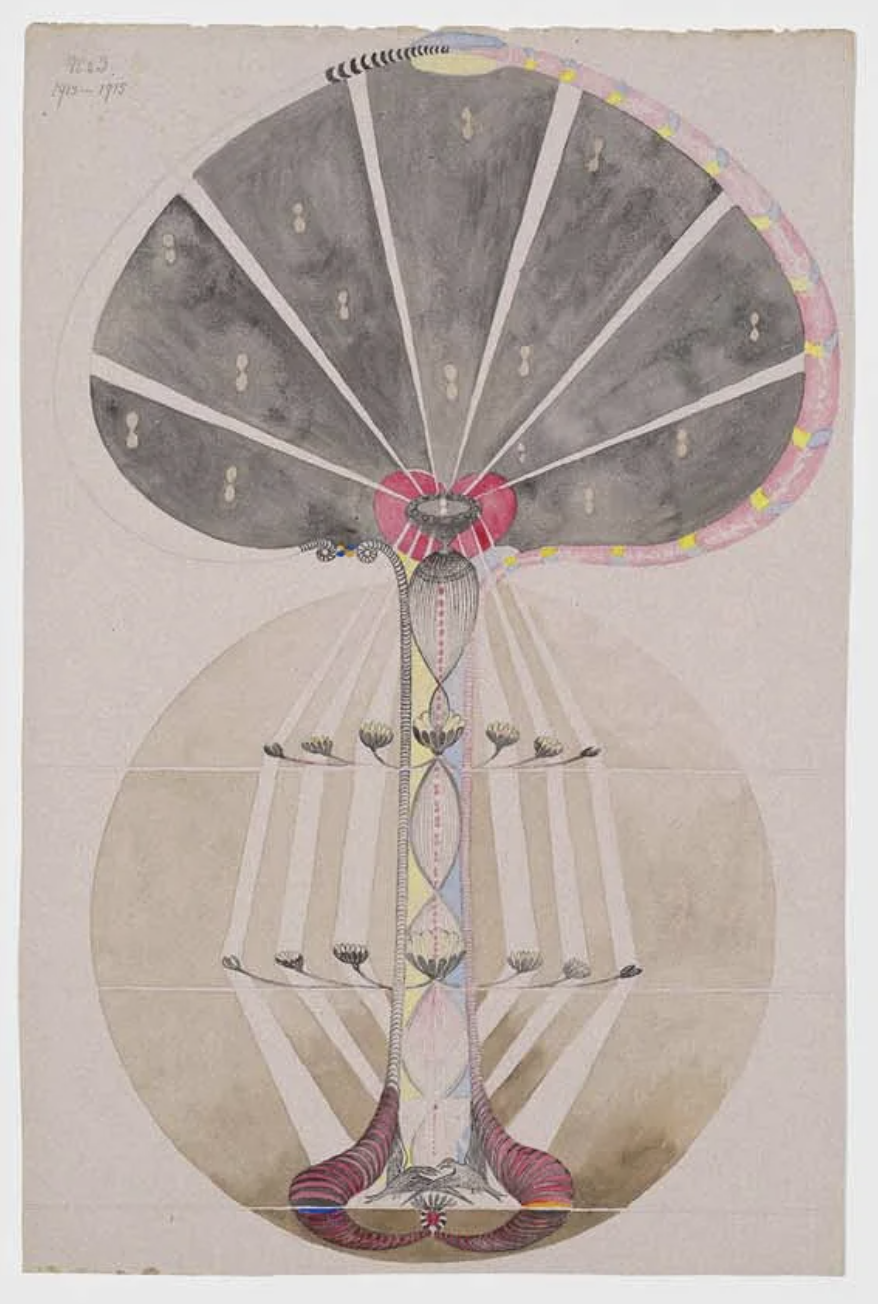
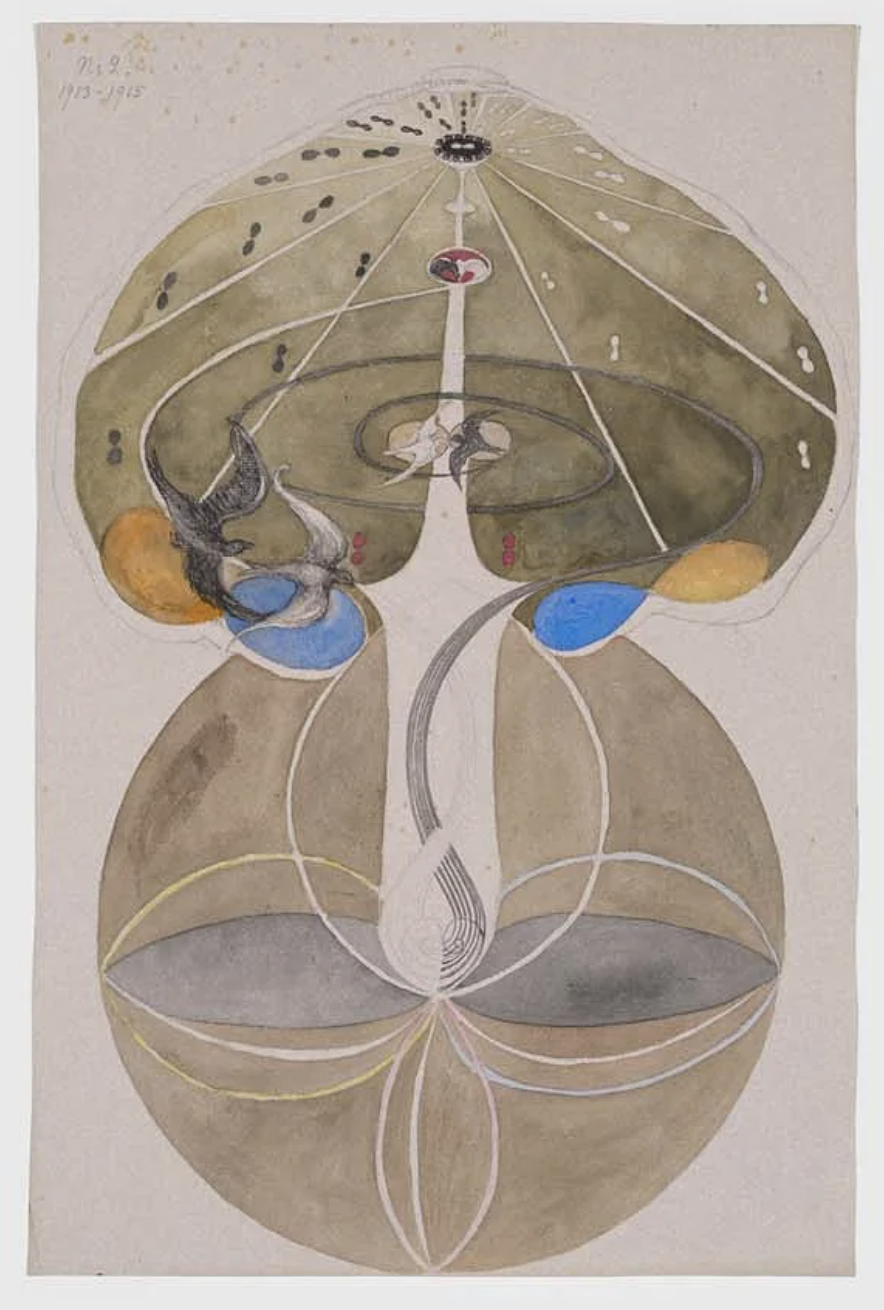
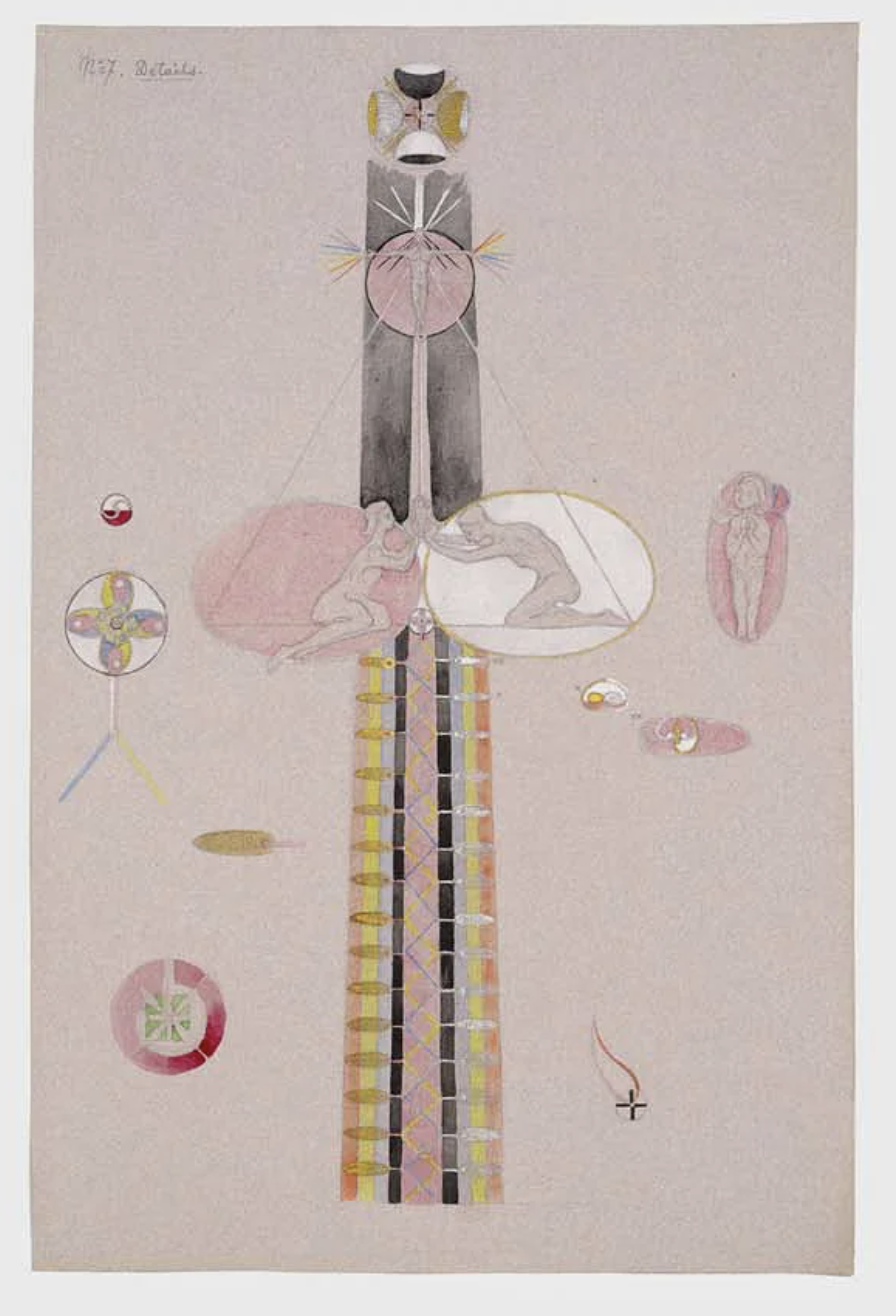
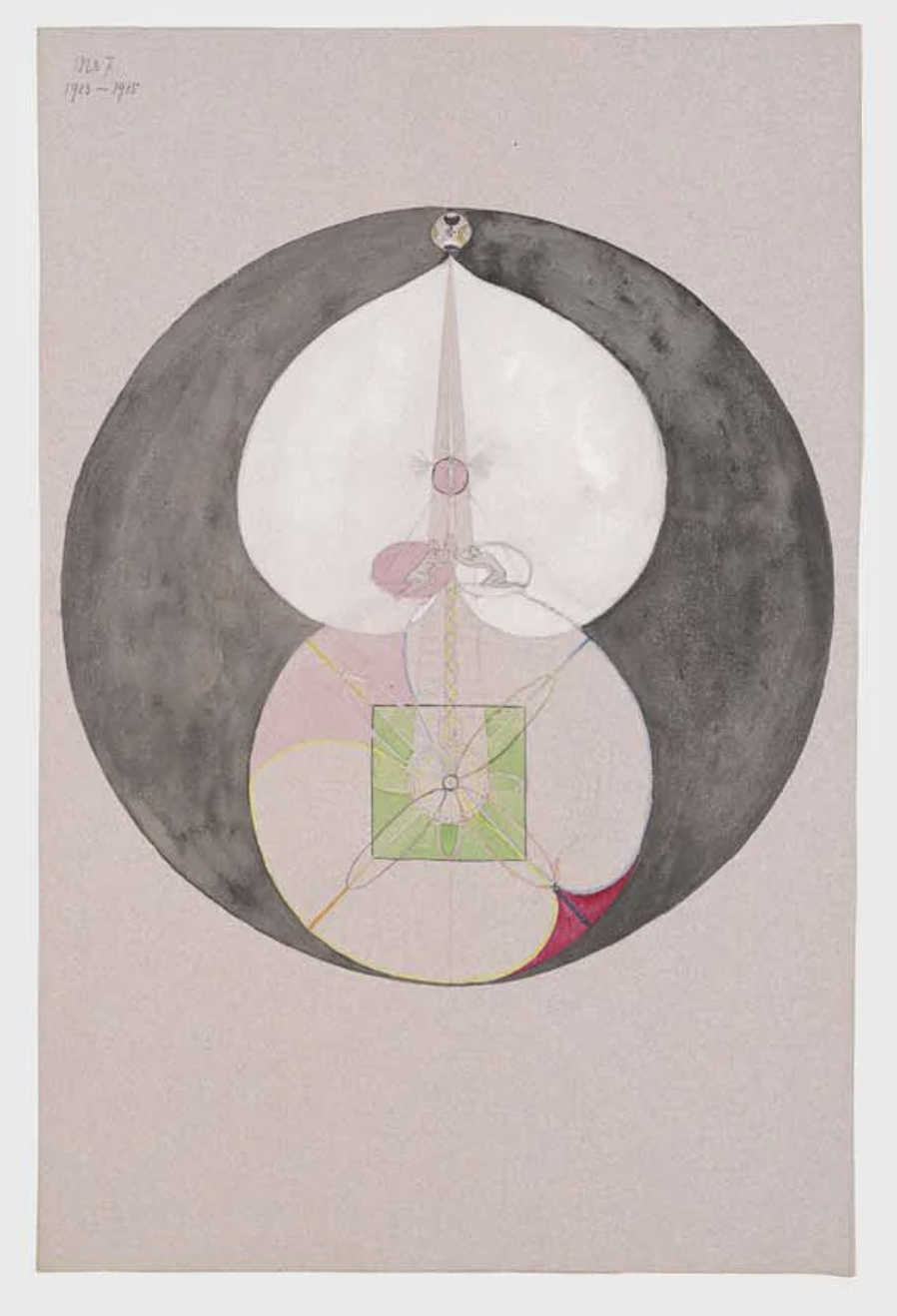
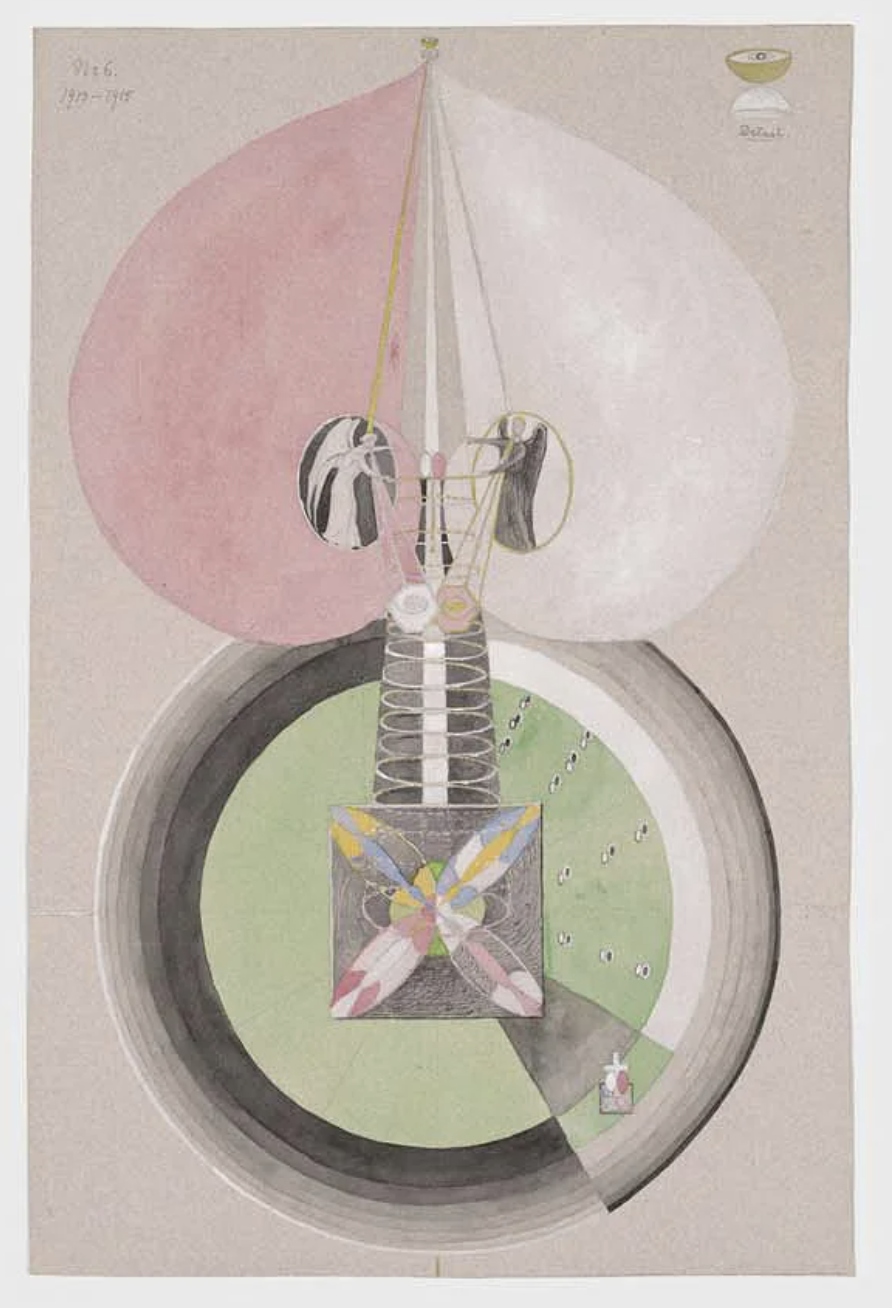
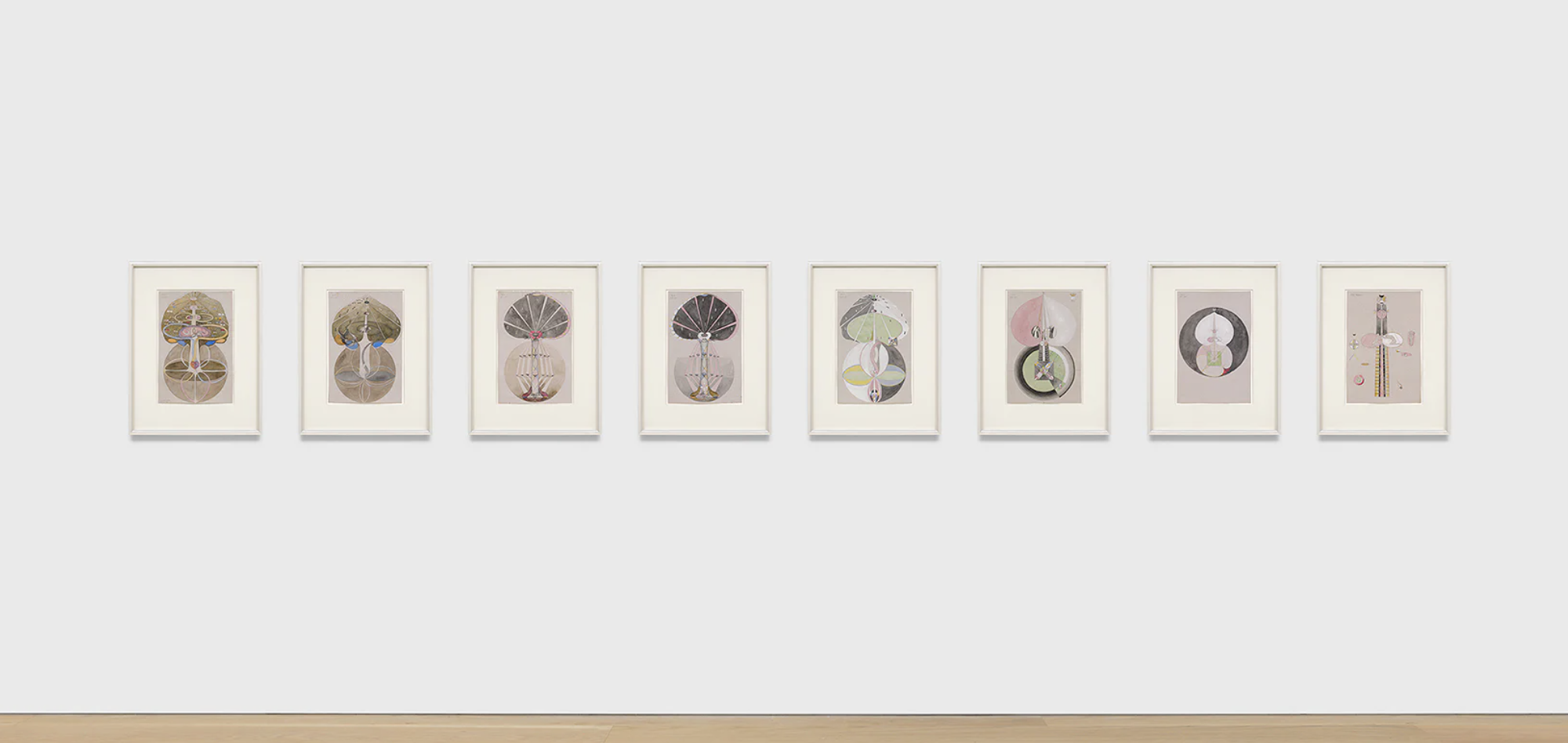
Though little known during her lifetime and for decades after, Swedish artist Hilma af Klint (1862–1944) has come to be recognized as one of the most important and inventive artists of the twentieth century. When she began making vibrant, symbolic paintings as early as 1906, her work was radically unlike anything that had come before, and preceded the abstract work of artists such as Wassily Kandinsky, Piet Mondrian, and Kazimir Malevich by several years.
In contrast to those artists, who were more broadly credited for inventing abstraction, af Klint was not directly engaged in any avant-garde circles or art movements, coming to abstraction through her own artistic and personal evolution and development. Af Klint studied at the Royal Academy of Fine Arts in Stockholm for five years starting in 1882, where she gained a reputation as an accomplished painter of naturalistic portraits and landscapes. As with many of her peers, af Klint was profoundly interested in spiritual movements and philosophies, including the then emergent teachings of Theosophy and Anthroposophy as well as Buddhism and Rosicrucianism, among others. She became actively involved in examining the mysteries of the supernatural world, and her interest in visualizing the invisible forces beyond the physical realm led her to explore and represent spiritualist ideas and sentiments in her art. Together with a group of like-minded women who called themselves “The Five,” she held séances to communicate with the spiritual realm. In 1906, at the age of forty-four, af Klint accepted her major spiritual “commission”: over the next nine years she created a series of 193 visionary works that she titled Paintings for the Temple, the dynamic and bold imagery of which was conveyed to her through a medium. These elaborate and profound compositions constitute some of the earliest abstract paintings in the history of Western art. Af Klint showed her work to very few people during her lifetime, believing that society was not ready to understand the nature of her art and that it should be left to future generations.
While the majority of her groundbreaking work is held together in the collection of the Hilma af Klint Foundation, this exhibition will feature a rarely seen set of af Klint’s Tree of Knowledge series, which the artist created in 1913 and 1915 with renewed focus after her four-year hiatus after completing ambitious mediumistic paintings mentioned above. This series reflects her interest in distilling her iconography and in further articulating the spiritualist ideas and philosophies that she was engaged with. As Åke Fant notes, “All of the works in this series feature a tree with a heart-shaped crown. A circle surrounds the tree trunk. All eight paintings in this series feature variations on this theme. We are dealing with a process, here, that goes from innocence and balance to a complex bifurcation into male and female, to the Fall from Grace and the conception of a child.” These complex, dynamic compositions mix biblical references to Genesis with esoteric iconography and vivid colors and motifs. The undulous, organic forms recall the stylings of art nouveau with an almost taxonomic attention to detail, resulting in fully formed visual allegories about the circle of life and death, darkness and light, spirit and matter, and being and becoming.
In the early 1920s, af Klint gave the set of watercolors as a gift to Rudolf Steiner, the founder of the spiritual and philosophical movement known as Anthroposophy, which influenced her. Around 1927, the works came into the possession of Albert Steffen, who became president of the Anthroposophical Society after Steiner’s death in 1925. It was not known that af Klint had made two versions of the Tree of Knowledge suite (the other is in the holdings of the af Klint Foundation) until the recent rediscovery of this set in the Albert Steffen Stiftung, Dornach, Switzerland. It is currently owned by a private collector.
Press release and images via David Zwirner, NYC.

